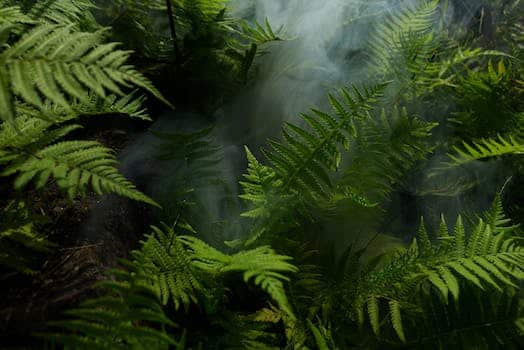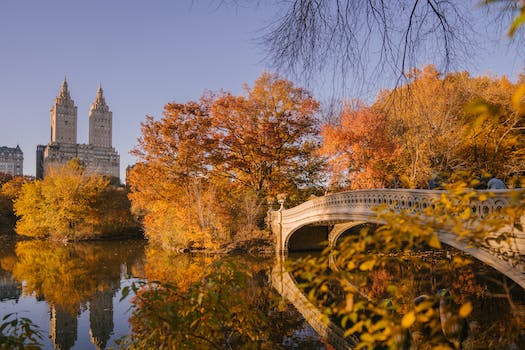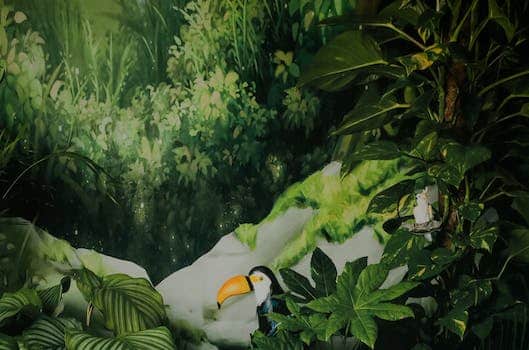The jungle is a place of immense biodiversity, where nature thrives in all its glory. It is a place of mystery and wonder, where every step you take reveals something new and fascinating. From the chirping of exotic birds to the rustling of leaves underfoot, the jungle is a sensory experience like no other. In this article, we will explore the wonders of the jungle and delve into the fascinating world of its flora and fauna. Join us on this journey as we discover the secrets of the jungle and experience the splendor of its biodiversity.
- 1. Introduction
- 1.1. What is biodiversity in the jungle?
- 1.2. Why is it important to experience it?
- 1.3. How can you prepare for a jungle adventure?
- 2. Discovering the Flora
- 2.1. Identifying the different types of trees
- 2.2. Learning about medicinal plants and herbs
- 2.3. Exploring the diversity of plant life
- 3. Encountering the Fauna
- 3.1. Spotting tropical birds and their unique calls
- 3.2. Observing monkeys and other primates
- 3.3. Finding reptiles and amphibians
- 4. Experiencing the Ecosystem
- 4.1. Understanding the importance of the canopy
- 4.2. Exploring the river and its inhabitants
- 4.3. Learning about the role of insects in the jungle
- 5. Challenges and Precautions
1. Introduction
The jungle is one of the most fascinating and diverse places on Earth. With its vast array of flora and fauna, it is a wonderland for nature lovers and adventure seekers alike. From the lush vegetation of the Amazon rainforest to the dense jungles of Borneo, experiencing the biodiversity of the jungle is an unforgettable experience that will leave you in awe of the natural world. In this article, we will explore some of the most incredible aspects of jungle biodiversity and what makes it such a unique and important ecosystem.
1.1. What is biodiversity in the jungle?
Biodiversity refers to the variety of life in a particular ecosystem, including the number of different species, their genetic diversity, and the variety of ecosystems they inhabit. In the jungle, biodiversity is incredibly high, with thousands of species of plants, animals, and insects living in a complex web of relationships. The jungle is home to some of the most diverse and unique ecosystems on the planet, from the rainforests of South America to the mangrove swamps of Southeast Asia. Exploring the biodiversity of the jungle can be an awe-inspiring and humbling experience, as it highlights the incredible complexity and interconnectedness of life on Earth.
1.2. Why is it important to experience it?
Experiencing the biodiversity of the jungle is a once-in-a-lifetime opportunity that simply cannot be missed. The jungle is home to an incredible array of flora and fauna, from towering trees and exotic flowers to colorful birds and rare mammals. By immersing yourself in this environment, you can gain a deeper appreciation for the natural world and all the wonders it has to offer. Whether you are a nature lover, an adventure seeker, or simply someone who wants to escape the hustle and bustle of everyday life, the jungle has something for everyone. So why is it important to experience it? Because it can broaden your horizons, teach you new things, and leave you with memories that will last a lifetime.
1.3. How can you prepare for a jungle adventure?
Preparing for a jungle adventure requires a lot of careful planning and consideration. The jungle is a wild and unpredictable environment, full of natural wonders and potential dangers. In order to fully experience the biodiversity of the jungle, it is important to come prepared with the proper gear, knowledge, and mindset. This article will provide tips and advice on how to prepare for a jungle adventure, so that you can make the most of your experience and stay safe while exploring this magnificent ecosystem.
2. Discovering the Flora
Exploring the jungle means immersing oneself in a world of biodiversity, where every step taken leads to a new discovery. The flora of the jungle is no exception, with countless species of trees, plants, and flowers waiting to be encountered. From towering tropical trees to delicate orchids, the jungle is a botanical wonderland. Each plant has adapted to survive in the unique environment of the jungle, whether it’s by growing tall to reach sunlight or developing a symbiotic relationship with other organisms. Taking the time to appreciate the flora of the jungle is a truly awe-inspiring experience.
2.1. Identifying the different types of trees
The jungle is home to a vast array of plant life, including countless species of trees. Identifying these trees can be a thrilling part of exploring the jungle’s flora. Some trees are easily recognizable, such as the towering kapok tree with its distinctive buttress roots. Others may require a more keen eye and knowledge of botanical features. Palms, for example, can be identified by their feather-like fronds and lack of branches. Learning to identify the different types of trees in the jungle can deepen your appreciation of this vibrant ecosystem.
2.2. Learning about medicinal plants and herbs
Learning about medicinal plants and herbs can be a fascinating and rewarding experience. The use of plants for medicinal purposes has been a part of human culture for thousands of years, and many of the medicines we use today have their origins in traditional herbal remedies.
By discovering the flora of the jungle, we can learn about the diverse range of plants that grow in this unique environment, and the many different ways in which they can be used. From treating common ailments like headaches and digestive issues, to more serious conditions like infections and chronic illnesses, there are countless medicinal plants and herbs that can offer relief and healing.
Whether you are interested in natural medicine, or simply want to learn more about the plants that surround us, exploring the world of medicinal herbs and plants can be a fascinating and rewarding journey.
2.3. Exploring the diversity of plant life
The jungle is a haven for a vast array of plant species. From towering trees to delicate ferns, the flora of the jungle offers endless opportunities for exploration and discovery. Each plant has its unique characteristics, from the shape and color of its leaves to the scent of its flowers. Some plants even have medicinal properties, which have been used by indigenous communities for centuries. Exploring the diversity of plant life in the jungle is an experience like no other, and it is impossible not to be in awe of the beauty and complexity of nature.
3. Encountering the Fauna
As you venture into the heart of the jungle, you are bound to encounter an array of fascinating creatures, some of which you may have never seen before. From the majestic Bengal tiger to the playful monkeys swinging from branch to branch, the biodiversity of the jungle is truly awe-inspiring. You may even catch a glimpse of the elusive leopard or hear the haunting call of the great hornbill. Just be sure to keep a safe distance and respect the natural habitat of these magnificent animals.
3.1. Spotting tropical birds and their unique calls
Exploring the jungle can be a thrilling experience, especially when encountering the diverse range of tropical birds found within. These birds come in all shapes and sizes, with a variety of unique calls that can be heard echoing through the trees. Some of the most commonly spotted birds include parrots, toucans, and macaws. These birds can be recognized by their colorful feathers and distinctive beaks. Taking the time to listen to their calls can also help you identify them. With a little patience and a keen eye, spotting and identifying tropical birds can be a rewarding experience.
3.2. Observing monkeys and other primates
Observing monkeys and other primates can be a thrilling experience in the jungle. These intelligent creatures are often seen swinging from branch to branch, grooming each other, or foraging for food. Some of the most common primates found in the jungle include howler monkeys, spider monkeys, capuchin monkeys, and marmosets. It is important to observe them from a distance and not to disturb their natural behavior. It is also important to remember that monkeys and other primates are wild animals and should not be approached or fed.
3.3. Finding reptiles and amphibians
The jungle is home to a myriad of reptiles and amphibians. When exploring the jungle, keep your eyes peeled for these fascinating creatures. Some of the most common reptiles found in the jungle include snakes, lizards, and turtles. Amphibians, on the other hand, include frogs, toads, and salamanders. To increase your chances of spotting these creatures, consider going on a guided tour with an experienced naturalist. They will be able to point out the different species and provide valuable information about their behavior and habitat. Remember to always respect the wildlife and keep a safe distance to avoid disturbing their natural behavior.
4. Experiencing the Ecosystem
The jungle is a complex ecosystem that is home to a vast array of plant and animal life. From the towering trees to the smallest insects, every living creature plays a vital role in maintaining the delicate balance of this environment. As visitors, we have the unique opportunity to experience firsthand the incredible biodiversity that the jungle has to offer. Whether hiking through the dense undergrowth, or paddling down a tranquil river, there is no shortage of sights and sounds to take in. But beyond the sheer beauty of this landscape, it is important to remember that we are guests in this ecosystem, and that we must treat it with respect and care. By doing so, we can help to ensure that this incredible natural wonder remains for future generations to enjoy.
4.1. Understanding the importance of the canopy
Canopies are an essential part of the ecosystem of the jungle. They provide shade, shelter, and a home to countless species of plants and animals. The canopy is the uppermost layer of the forest, consisting of the branches, leaves, and stems of the tallest trees. It is where much of the photosynthesis takes place, converting sunlight into energy that fuels the entire ecosystem. Without the canopy, the jungle would be a very different place, with less biodiversity and a less stable environment.
4.2. Exploring the river and its inhabitants
Exploring the river and its inhabitants provides a unique opportunity to experience the diverse ecosystem of the jungle. The river is teeming with life, from the smallest fish to the largest predators. As you navigate the waters, keep an eye out for the elusive river otter, the brightly colored macaws, and the majestic jaguar. The river also provides a vital source of food and transportation for the local indigenous communities, who have lived in harmony with the jungle for generations. By experiencing the river and its inhabitants, we can gain a deeper appreciation for the delicate balance of life in the jungle and the importance of preserving it for future generations.
4.3. Learning about the role of insects in the jungle
Insects play a crucial role in the jungle ecosystem. They are responsible for pollinating plants, breaking down decaying matter, and serving as a food source for larger animals. Without insects, the delicate balance of the jungle would be disrupted, leading to a potential collapse of the entire ecosystem. By observing and learning about the various species of insects in the jungle, visitors can gain a deeper understanding and appreciation for the complex web of life that exists within this biodiverse environment.
5. Challenges and Precautions
Experiencing the biodiversity of the jungle can be an exhilarating and rewarding experience, but it is not without its challenges and precautions. One of the biggest challenges is navigating the dense vegetation and rough terrain. It is important to have a guide who is familiar with the area and can help you navigate safely. Additionally, there are many potential hazards in the jungle such as poisonous plants, venomous snakes, and dangerous animals like jaguars and crocodiles. It is important to take precautions such as wearing protective clothing and carrying a first aid kit. Finally, it is important to respect the delicate balance of the jungle ecosystem and avoid damaging the environment in any way.
5.1. Dealing with extreme weather conditions
When experiencing the biodiversity of the jungle, one of the biggest challenges is dealing with extreme weather conditions. The jungle can be hot and humid, with intense rainstorms and powerful winds. It’s important to take precautions to ensure safety and comfort during these times. Some tips for dealing with extreme weather conditions in the jungle include wearing light, breathable clothing that dries quickly, carrying a waterproof bag to protect your belongings, and staying hydrated by drinking plenty of water. Additionally, it’s important to be aware of weather forecasts and plan accordingly, seeking shelter if necessary. By taking these precautions, you can safely and comfortably enjoy the incredible biodiversity of the jungle.
5.2. Avoiding dangerous animals
When exploring the jungle, it’s important to be aware of the potential dangers posed by the various animals that inhabit the area. Some of the most dangerous animals to watch out for include snakes, spiders, crocodiles, and big cats like jaguars and leopards. To avoid encountering these animals, it’s important to stick to well-traveled paths and avoid venturing off into dense brush or uncharted territory. Additionally, it’s important to keep a safe distance from any animals you do encounter and to never attempt to touch or feed them. By taking these precautions, you can safely experience the incredible biodiversity of the jungle without putting yourself at risk.
5.3. Protecting yourself from insect bites and diseases
Insect bites and diseases are common challenges faced by individuals exploring the biodiversity of the jungle. To protect oneself from insect bites, it is recommended to wear long-sleeved clothing and pants, use insect repellent, and avoid wearing perfume or scented lotions. Additionally, it is important to check for ticks and remove them immediately if found. Taking precautions such as these can significantly reduce the risk of contracting insect-borne illnesses like malaria or dengue fever.
Conclusion
In conclusion, experiencing the biodiversity of the jungle is a truly unique and awe-inspiring experience. From the vast array of plant life to the fascinating creatures that call it home, the jungle offers a glimpse into a world that is both beautiful and complex. Whether you are a nature enthusiast or simply looking for an adventure, exploring the jungle is an experience that should not be missed.





